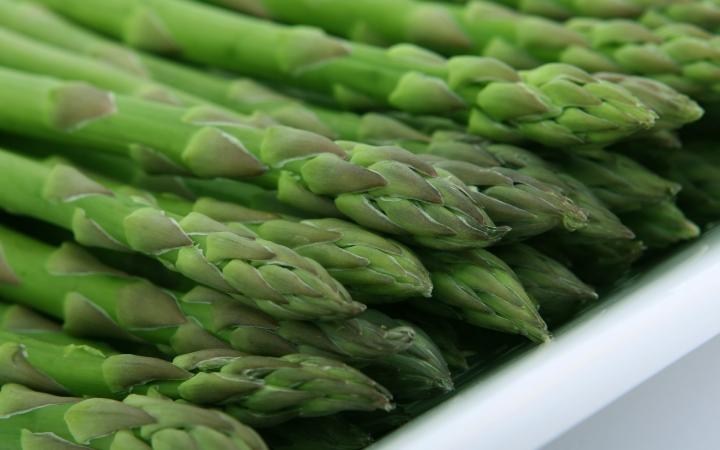
Asparagus is a perennial bulb and stem vegetable that greets us every spring. It may take 2 to 3 years to get started and produce, so patience is needed! But then the plant can be productive up to 20 years, so we think it’s worth the wait.
Asparagus has male and female plants, with the female plants producing berries. Regions with cool winters are best for this cool-season crop.
Planting
- Asparagus is planted in early spring as soon as the soil can be worked. The plant is grown from “crowns” (1-year-old plants).
- Eliminate all weeds from the bed, digging it over and working in a 2- to 4-inch layer of compost, manure or soil mix.
- Dig trenches of about 6 inches wide and 6 to 12 inches deep. Some experts believe shallow trenches of 6 inches are best.
- Asparagus does not like to have its feet “wet,” so be sure your bed has good drainage. For that reason, raised beds can be a good place to plant asparagus. Learn how to make a raised garden bed.
- Create a mound in the trench and plant the crowns 15 to 18 inches apart, spreading the roots over the ridge.
- Cover the roots and crowns with soil 2 inches deep and water thoroughly.
- As the stems grow, fill in the rest of the trench with soil, leaving 3 to 4 inches of the stem exposed.
- Read this blog on growing asparagus from seed.
Care
- When the trench is filled, add a 4 to 8 inch layer of mulch and water regularly.
- Do not harvest the spears in the first year, but cut down dead foliage in late fall and side-dress with compost.
- During the second year, keep the bed thickly mulched, side-dress in spring and early fall, and cut down dead foliage in late fall.
Pests/Diseases
- Asparagus beetles
- Cutworms
- Slugs
- Crown rot
- Rust
- Asparagus is considered a deer-resistant plant, so plant it near more susceptible crops.
Harvest/Storage
- Asparagus can take three growing seasons to harvest; you may be able to lightly harvest during the second year.
- In the first year, just let the asparagus go vegetative to give the crown a chance to get well established. Next spring, remove the old fern growth from the previous year, and keep an eye open for the new spears to begin emerging.
- For the following years, maintain the bed and harvest only the spears thicker than a pencil.
- The asparagus can be harvested for a period of about two to three weeks once the spears start to show. Keep a close eye on your asparagus so that you don’t miss the harvest!
- After harvest, allow the ferns to grow; this replenishes the nutrients for next year’s spear production.
- Harvest for 2 or 3 weeks. After you harvest, leave the ferns so it can gather nourishment for next year’s growth.
- Cut spears that are about 6 inches in length at an angle.
- Asparagus freezes well.
Recommended Varieties
- White asparagus is not a variety, but simply asparagus grown in the absence of sunlight to prevent chlorophyll from developing. White asparagus is slightly sweeter, but has less fiber than green asparagus.
- Purple asparagus is bred to be purple in color, but turns green when it is cooked. Purple varieties tend to have thicker but fewer spears.
Wit & Wisdom
- A pinch of baking soda in the cooking water keeps beans, spinach, and asparagus greener.
- At only 40 calories per cup, asparagus is amazingly good for you! See our list of awesome asparagus health benefits.
Recipes
- Iced Asparagus Soup
- Baked Asparagus
- Asparagus Vinaigrette
Cooking Notes
A simple and easy favorite when it comes to asparagus is fresh roasted asparagus.






